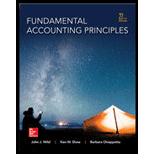
Concept Introduction:
Issuance of Common Stock:
Common Stock may be issued at par or stated value. In case the issue price is more than the par or stated value, the shares are called to be issued at a premium and in case the issue price is less than the par or stated value, the shares are called to be issued at discount. Common stocks may also be issued at no par or stated value, in such case there shall be no premium or discount recorded on the issue of shares.
Cash dividend:
The Cash dividend is the amount of dividend paid to shareholders in cash. The Cash dividend is declared first and paid later. There are two
There are two types of cash dividend are paid; Common stock dividend and Preferred dividend. Preferred dividend is paid in priority and it can be cumulative as well. In case of cumulative
Stock Dividend:
The Stock dividend is the number of shares given as dividend to the shareholders. The Stock dividend is declared first and shares are issued later. There are two journal entries made, one at the time of declaration of stock dividend and another at the time of issuance of shares.
To record the declaration of small stock dividends, the retained earnings is debited with the market value of shares issued as stock and common stock dividend distributable account is credited with the same amount. At the time of issuing shares, the common stock dividend distributable is debited with the market value of shares issued as stock and common stock is credited with the par value of shares issued as stock and Paid in excess of par value- common stock is credited with the excess amount.
Treasury stock is the shares bought back by the company itself. A company may purchase its own shares and the shares bought back are called treasury stock. The journal entries are made at the time of sale and purchase of treasury stock as follows:
• For Purchase of treasury stock: Treasury stock account is debited and cash account is credited with the cost of treasury stock purchased.
• For Sale / Reissuance of treasury stock: Cash account is debited for the amount received on sale of treasury stock and the Treasury stock account is credited with the cost of treasury stock. For the difference in cost and sale value, Additional Paid in Capital and Retained earnings accounts are adjusted.
To indicate: The effect of each transaction on
Want to see the full answer?
Check out a sample textbook solution
Chapter 13 Solutions
Fundamental Accounting Principles -Hardcover

 AccountingAccountingISBN:9781337272094Author:WARREN, Carl S., Reeve, James M., Duchac, Jonathan E.Publisher:Cengage Learning,
AccountingAccountingISBN:9781337272094Author:WARREN, Carl S., Reeve, James M., Duchac, Jonathan E.Publisher:Cengage Learning, Accounting Information SystemsAccountingISBN:9781337619202Author:Hall, James A.Publisher:Cengage Learning,
Accounting Information SystemsAccountingISBN:9781337619202Author:Hall, James A.Publisher:Cengage Learning, Horngren's Cost Accounting: A Managerial Emphasis...AccountingISBN:9780134475585Author:Srikant M. Datar, Madhav V. RajanPublisher:PEARSON
Horngren's Cost Accounting: A Managerial Emphasis...AccountingISBN:9780134475585Author:Srikant M. Datar, Madhav V. RajanPublisher:PEARSON Intermediate AccountingAccountingISBN:9781259722660Author:J. David Spiceland, Mark W. Nelson, Wayne M ThomasPublisher:McGraw-Hill Education
Intermediate AccountingAccountingISBN:9781259722660Author:J. David Spiceland, Mark W. Nelson, Wayne M ThomasPublisher:McGraw-Hill Education Financial and Managerial AccountingAccountingISBN:9781259726705Author:John J Wild, Ken W. Shaw, Barbara Chiappetta Fundamental Accounting PrinciplesPublisher:McGraw-Hill Education
Financial and Managerial AccountingAccountingISBN:9781259726705Author:John J Wild, Ken W. Shaw, Barbara Chiappetta Fundamental Accounting PrinciplesPublisher:McGraw-Hill Education





